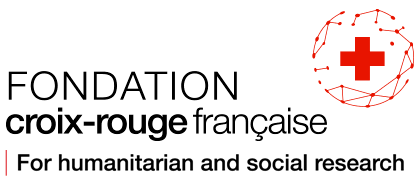Strengthening the resilience of the Nigerien population to floods: adapting humanitarian actions to socio-cultural contexts in Niamey
This work aims to address the obstacles and pitfalls to avoid in the implementation of actions to support populations and communities following major climatic events.
Studying the sociocultural determinants that influence the adaptation capacities of populations in the face of climate risks
With climate change and the need to cope with increasingly frequent climate extremes, African cities, particularly Niamey, are exposed to the risk of flooding. The settlements in the flood zones of the city of Niamey reflect demographic pressure, but also poverty and the inadequacy of urban planning policies. This is why these cities must promote new management policies to improve their resilience to flooding. The populations most exposed to the risk of flooding in African cities are also the poorest who most often live in the areas most at risk. In response to the recurring floods in recent years in Niamey, significant efforts are being made by international actors by mobilizing local actors to reduce the vulnerability of the poorest populations who are affected by these floods. However, these efforts have not enabled populations to build a resilient response to flooding in a sustainable and effective manner. This study will therefore attempt to fill this gap by documenting the socio-cultural determinants that influence populations’ adaptation capacities in order to enable stakeholders to integrate them into their prevention and risk reduction actions, and to enable populations to become actors in their own security.
Combining quantitative and qualitative approaches to study all actors involved in humanitarian actions in Niamey
This study on the adaptation of humanitarian actions to socio-cultural contexts in Niamey focuses on actors involved at different levels: international actors, local actors and populations benefiting from humanitarian aid to cope with floods. To carry out this study, the first approach consists of mapping the international and local actors involved in risk management: identity, role, means, modes of action. In addition, field analyses are carried out to identify these “poverty trap” situations in the implementation of certain aid and vulnerability reduction actions. The second, more qualitative approach, namely a series of interviews, allows us to understand the process of developing and implementing these actions. We also conduct focus groups with local populations and actors to understand their perceptions of risk, identify what they are doing to strengthen their resilience, and determine their needs to cope with floods. These interactions with local actors and populations also allow us to see how the actions undertaken by international bodies have influenced their empowerment, and in a sustainable way, their behaviors of prevention and protection against floods. We also study the ways and means by which they can be supported by international actors to better prepare themselves to face the risk both at the time of the crisis and between two events.
Biography
Adam Abdou Alou defended a thesis in geography in 2018 as part of a joint supervision of the University of Grenoble Alpes and the University of Niamey entitled “The city of Niamey facing river floods. Vulnerability and resilience of individual and collective adaptation modes”. He is now a visiting professor in the geography department of the University of Niamey and his research focuses mainly on climate risks.
Photo: UNICEF
